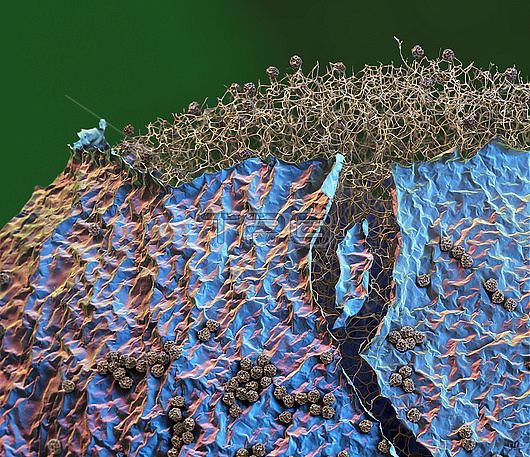
Coloured scanning electron micrograph (SEM) of a partly open fruiting body from the slime mould Lamproderma lycopodia showing the spores (dark brown) and the capillitium (yellow). The spores will germinate into free-living, single-celled amoeba. The amoeba aggregate to form a plasmodium, a large single cell with multiple nuclei. The plasmodium can move slowly, feeding on bacteria, fungi and decaying matter. In poor conditions the plasmodium forms fruiting bodies and the life cycle begins again. Slime moulds were once classified as fungi but are now classified as protozoa. The fruiting bodies of Lamproderma lycopodia are only found on the leaves of clubmosses (Lycopodium sp.). Specimen from the Black Forest National Park, Germany. Magnification: x250 when printed at 15cm wide.
| px | px | dpi | = | cm | x | cm | = | MB |
Details
Creative#:
TOP28908107
Source:
達志影像
Authorization Type:
RM
Release Information:
須由TPG 完整授權
Model Release:
n/a
Property Release:
n/a
Right to Privacy:
No
Same folder images:
Restriction:
All moral rights asserted. Recolouring or alterationof the image is prohibited without permission.

 Loading
Loading